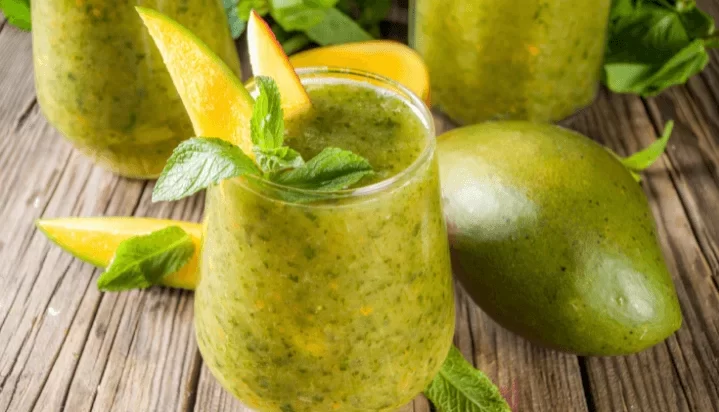Onion Pakoda Recipe: Possibly one of the traditional and ancient pakora recipes involves sliced onions and chickpea flour. This deep-fried snack is a popular choice across India and is prepared for various occasions, influencing the preparation method. Typically, the common approach is to coat thinly sliced onions with a spiced besan batter to create layered fritters. However, an alternative method involves preparing it like a dumpling without multiple onion layers.
Pakoda or pakora recipes are commonly prepared as deep-fried fritters, ideal for an evening snack. While these savory snacks are easy to make, certain essential steps must be followed to achieve the desired results. This recipe post aims to cover five basic tips and tricks to prepare crispy and layered onion pakodas, also known as kanda bajji.
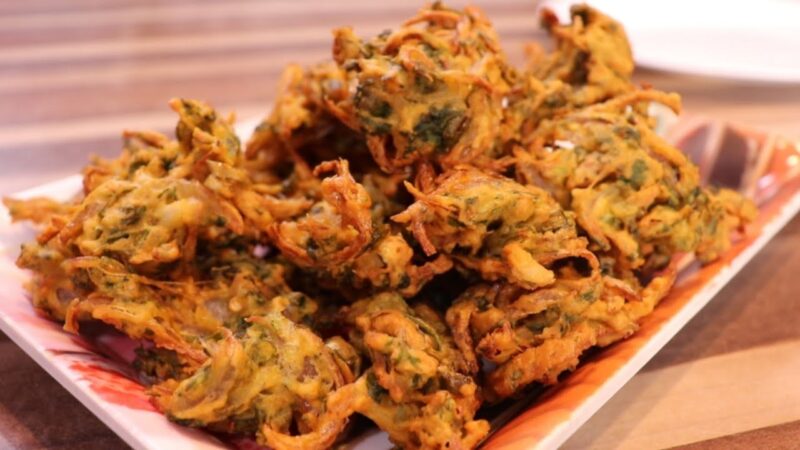
Though I shared this recipe earlier, I’m reposting it with additional tips and tricks, providing a more comprehensive explanation in the video. Instead of making assumptions, I’ve detailed each step. In summary, this recipe guarantees crispy and layered pyaj ke pakode. These pakodas are not only suitable for evening snacks but also serve well as starters and dumplings for kadhi recipes. I’ve crafted these fritters as a versatile snack, and they can even be used as a stuffing between pav to create bhajji pav, a personal favorite of mine. While besan is essential for this recipe, the addition of rice flour enhances the crispiness. You can increase the quantity of rice flour for a crunchier texture.
Onion Pakoda Recipe:
Additionally, here are some extra tips, suggestions, and variations for the onion pakoda recipe. Firstly, exercise caution when adding moisture or water to the besan and onion mixture. Onions typically contain enough moisture for the coating, but if needed, add water in batches. Secondly, as an alternative to rice flour, cornflour can be used for the same purpose. While it will also make the pakoras crispy, it might slightly affect the taste. Therefore, if you have access to rice flour, it is recommended for better results. Lastly, deep-fry the pakoras over low to medium heat for even distribution of heat, ensuring uniform cooking. Cooking on low flame enhances the crispiness and brittleness of the texture.
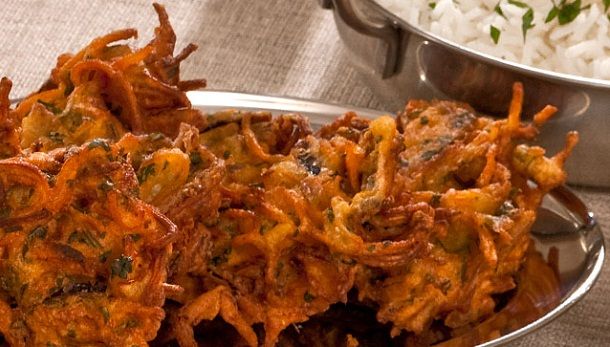
Ingredients: Onion Pakoda Recipe
For Onion Bajji:
- 400 grams onion
- 3 chillies, finely chopped
- Few curry leaves, chopped
- 2 tbsp coriander, finely chopped
- 1 tsp chilli powder
- ¼ tsp turmeric
- ¼ tsp cumin powder
- ¼ tsp ajwain
- 1 tsp ginger paste
- ¾ tsp salt
- 1½ cup besan/gram flour
- ¼ cup rice flour
- Oil for frying
For Hari Dahi Chutney:
- ½ cup thick curd
- 2 tbsp green chutney
Instructions:
Onion Pakoda Recipe
How to Make Onion Pakoda Recipe:
- Thinly slice the onions, ensuring uniform thickness for even frying.
- Transfer the onions into a large bowl.
- Add 3 chopped chillies, a handful of chopped curry leaves, 2 tbsp finely chopped coriander, 1 tsp chilli powder, ¼ tsp turmeric, ¼ tsp cumin powder, ¼ tsp ajwain, 1 tsp ginger paste, and ¾ tsp salt.
- Squeeze and mix well, ensuring all the spices are thoroughly combined, and the onions release moisture.
- Further, add 1½ cups besan, ¼ cup rice flour, and mix well.
- Squeeze and mix without adding any water; the moisture in the onions is sufficient to form the dough. Add more besan if needed.
- Drop the dough into hot oil, forming a random shape.
- Fry on medium flame, stirring occasionally, until the pakodas turn golden brown and crisp.
- Drain off the pakodas and enjoy them with hot tea.
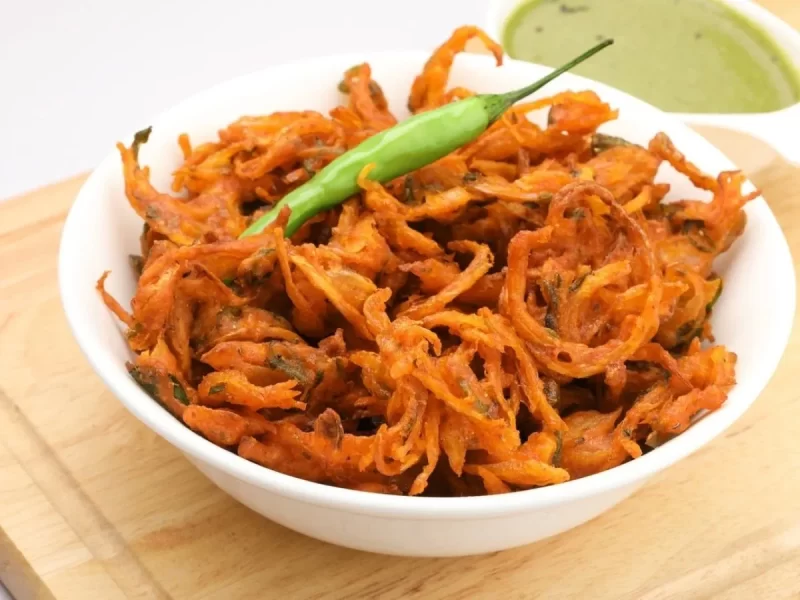
How to Make Hari Dahi Chutney:
- In a bowl, take ½ cup thick curd and add 2 tbsp green chutney.
- Mix well, ensuring everything is thoroughly combined.
- Finally, enjoy the dahi chutney with onion pakodas.
Nutrition Information:
- Calories: 362 kcal
- Carbohydrates: 63g
- Protein: 17g
- Fat: 5g
- Saturated Fat: 1g
- Polyunsaturated Fat: 2g
- Monounsaturated Fat: 1g
- Sodium: 644mg
- Potassium: 937mg
- Fiber: 10g
- Sugar: 15g
- Vitamin A: 733 IU
- Vitamin C: 82mg
- Calcium: 86mg
- Iron: 5mg
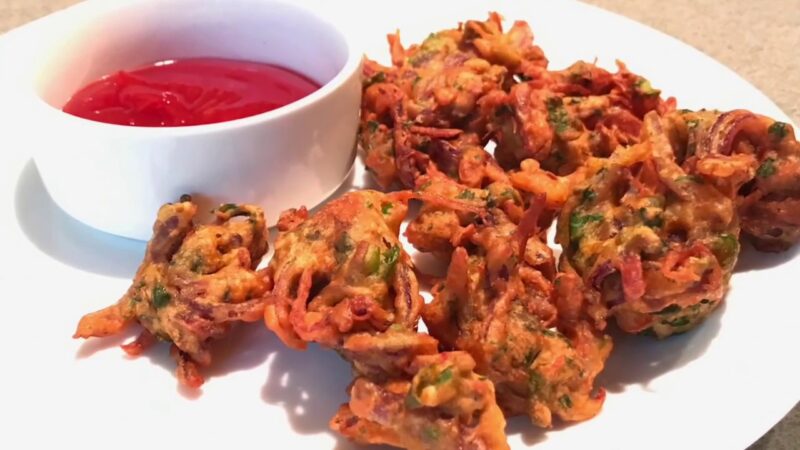
Conclusion
Achieving the pinnacle of perfection in Onion Pakoda Recipe demands meticulous attention to detail. Each phase, from the precision of onion slicing to the thorough amalgamation of spices and the mastery of frying temperatures, contributes significantly to the final result. The judicious blend of besan and rice flour elevates the overall texture, while the ability to tailor spice levels ensures a personalized culinary experience. By adhering to these guidelines, one can soon relish the joy of indulging in crispy, flavorsome onion pakodas.
Frequently Asked Questions on
Onion Pakoda Mastery:
Why do my Onion Pakodas sometimes turn out soggy?
A: Attaining optimal crispiness hinges on uniform onion slicing and a meticulous spice blend. Ensuring the oil is precisely heated is paramount for achieving that perfect crunch.
Can I add other vegetables to the pakoda batter?
A: Certainly! Delve into experimentation by incorporating vegetables such as spinach or potatoes for a medley of unique flavors and textures in your Onion Pakoda.
How long can I store leftover Onion Pakodas?
A: While the epitome of enjoyment lies in freshness, store leftover Onion Pakodas in an airtight container in the refrigerator for a maximum of two days. For a revived crispy bite, reheat in the oven.
What’s the secret to making pakodas without deep-frying?
A: Opt for a healthier alternative by baking them! Preheat the oven, arrange the Onion Pakoda on a baking sheet, and bake until they achieve a golden brown hue.
Can I freeze pakoda batter for later use?
A: Absolutely! Freeze your Onion Pakodas batter in a hermetically sealed container. When the moment strikes for a quick pakoda feast, simply thaw it in the refrigerator, and you’re ready to embark on a culinary delight.


